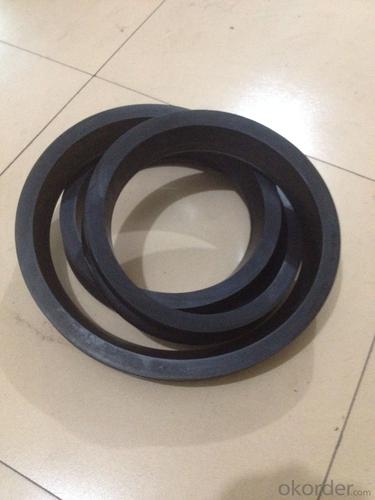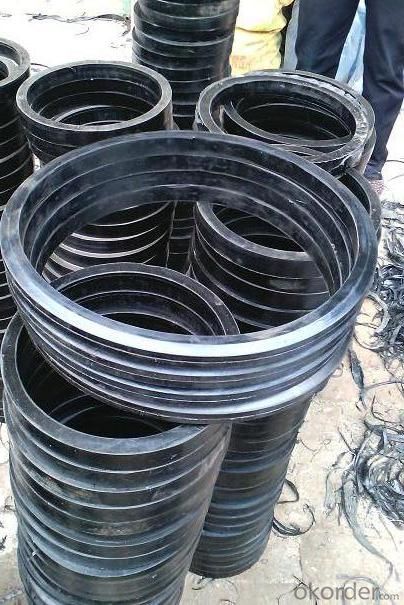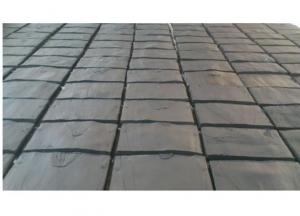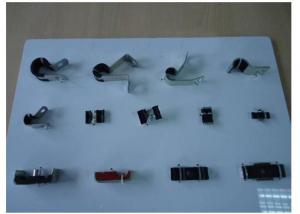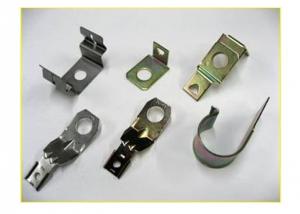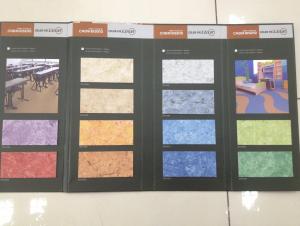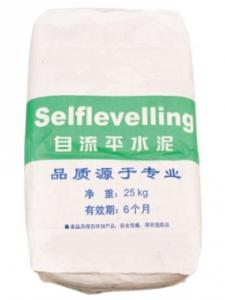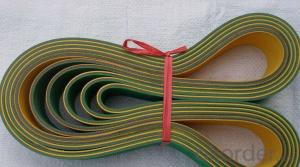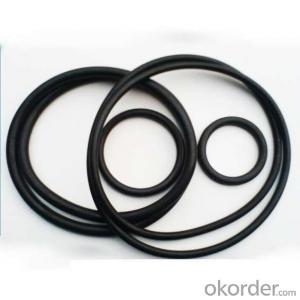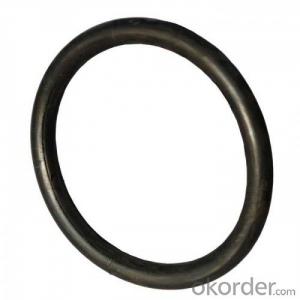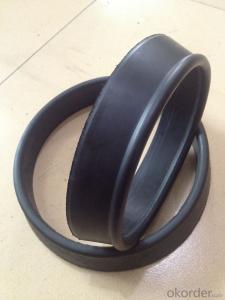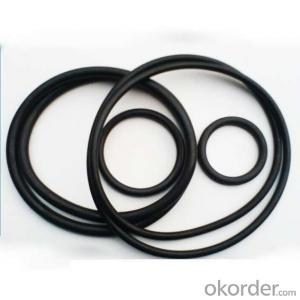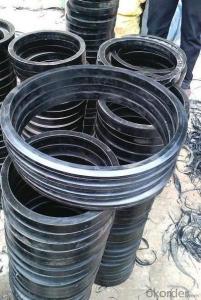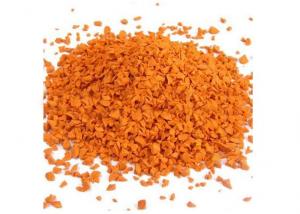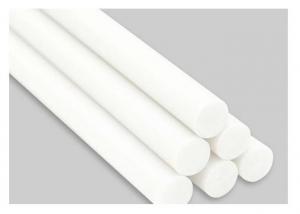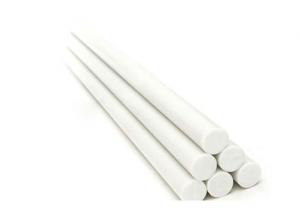Gaskets EPDM Rubber Ring EPDM Rubber DN1600
- Loading Port:
- China main port
- Payment Terms:
- TT OR LC
- Min Order Qty:
- 100 pc
- Supply Capability:
- 100000 pc/month
OKorder Service Pledge
OKorder Financial Service
You Might Also Like
1.Description of Gasket :
Ginseal Spiral-wound gaskets comprise a mix of metallic and filler ma- terial. Generally, the gasket has a metal (normally carbon rich or stainless steel) wound outwards in a circular spiral (other shapes are possible) with the filler material (generally a flex- ible graphite) wound in the same manner but starting from the opposing side. This results in alternating layers of filler and metal. The filler material in these gaskets acts as the sealing element, with the metal providing structural support.
2.Features of Gasket :
1.A.Wound style gasket consists of four type:basic type,with inner ring,with outer ring,and with inner and outer rings. B.Heat exchanger wound style gasket:basic type and with inner and outer rings.
2.Normally matrial used:
A.Steel tape:08F,0Cr18Ni9(304),0Cr18Ni9Ti,1Cr18Ni9Ti(321),0Cr17Ni12,M02(316),00Cr17Ni14M02(316L).
B.(Cold roll)steel plate for inner and outer ring:Outer ring:mild steel,0Cr13 and 0Cr18Ni9
Inner ring:same as steel t
3.Gasket Images:

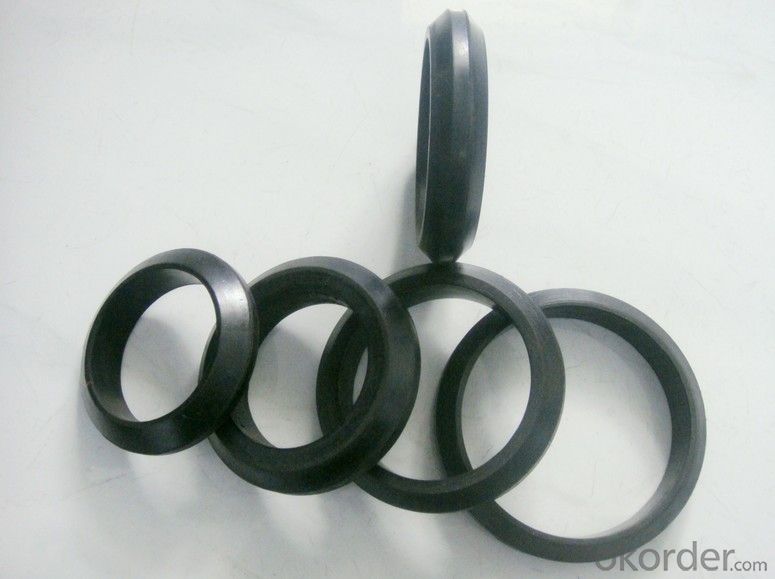
4.Specifications of the Gasket:
1. Material:Stainless steel, PTFE, graphite, Carbon steel
2.Temperature:-196~700degree
3.Standard:ANSI,HG,ISO
Packaging Methods:
Inner by the plastic bag, outer by the carton; or as the customer's demands.
Shipping Methods:
1. By International Express: DHL, FEDEX, UPS, TNT
2. By Sea (Loading Port: QingDao, China)
3. By Air
5.FAQ
Ask 1: Why some supplier give me the price much cheaper than you?
Answer:1.They wanna attract your attention,while you contact with them,they would raise the price by any reason.
2.They willn't provide the high qualities to you cause it had the cheap price.
Ask 2:Should i pay for it If some product need molds?
Answer:I'm afraid you should pay for it,However,We would return it back when we get the first order.
Ask 3:Your price seems higher than others.
Answer:As you know,Price equals qualities.We have faith in our qualites.But it must be in the acceptable range
- Q: How should the rubber products be dirty?
- Wipe rubber products with a soft cloth. The most important thing is to first rubber products surface adsorption of dirt off, and then in dry, you can.
- Q: Is work in rubber products harmful to health?
- In the manufacture of rubber products, the rubber itself is not toxic, but some agents are toxic, so most of the factories are now using intelligent small drug batching system, to avoid direct contact with the human body. In use, some contact with the human body rubber requirements are very high, from the choice of gum species (usually silicone rubber and PU), to the use of mixing agents, have strict requirements. If the general use, such as tires, seals and so on, and the body does not matter much.
- Q: What are the application fields of waste tire rubber powder?
- Waste tire rubber powder modified asphalt for highway, waterproofing materials, modified concrete, modified coating, railway sleepers, rubber brick, machine pad, cushion, cushion and other types of subgrade gasket and fenders, sound-absorbing materials, road sealant, shoes, carpet padding, tire pad, car body, bottom sealing rings miscellaneous pieces of rubber, etc..
- Q: Process for producing rubber products
- The 1. main raw materials of rubber products with rubber as basic material, and rubber is grown in tropical, subtropical and the rubber tree bark collected by artificial cut.2. various compounding agents are auxiliary materials used to improve some properties of rubber products.3. fiber material (cotton, linen, wool and all kinds of man-made fiber, synthetic fiber and metal materials, steel wire) is used as rubber products skeleton material, in order to enhance the mechanical strength, limit product variant. In the preparation of raw materials, the ingredients must be accurately weighed according to the formula. In order to make the rubber and the complexing agent can mutually mixing, need to process material. Rubber to 60--70 C drying room drying soft gel, gel breaking and then cut into small pieces, with a massive agent. Such as wax, stearic acid, rosin and so on to be crushed. If the powder containing mechanical impurities or coarse screening to remove liquid such as pine tar, ancient Malone needs heating, melting, evaporation and filter impurities, complexing agent to dry or easy to agglomerate, when mixing if not dispersed vulcanized bubbles will affect the quality of the products
- Q: How can the frictional properties of rubber improve?
- The free energy of rubber surface determines the size of the interaction force between rubber and duality, and then affects the adhesive friction of rubber. Generally speaking, the friction coefficient increases with the increase of surface free energy.
- Q: What are the forming methods of rubber products?
- In these methods, injection molding has the significant advantages of simplifying process, reducing the number of operators; second, reduce the energy consumption of about 10%; the production efficiency is improved by 4 ~ 7 times; improve product uniformity, stability, size precision and the qualification rate; reduce the flash, saving material and convenient operation;, low labor intensity, high degree of mechanization and automation. Therefore, in recent years, more and more attention has been paid to injection molding technology, and it has been developed rapidly in rubber products production
- Q: What is rubber damping material?
- A general term for polymeric materials with sound absorption, heat insulation, shock proof and other functions. Materials with larger internal friction peaks, such as polyacrylate, polyurethane, epoxy resin, butyl rubber and nitrile rubber, are often used at the service temperature and frequency.
- Q: Rubber products labeled Huai gum can improve wear?
- Today, white carbon (silica) is added to the tread formula, which is not for abrasion resistance, but for skid resistance of wet pavements, and is resistant to cutting in truck tires.
- Q: What is the relationship between synthetic rubber and crude oil?
- Synthetic rubber is a kind of polymer material made of petroleum and natural gas as raw material and polymerized with diene and olefin as monomers.The main purpose of the industrial synthesis of rubber material is cost saving, improving the properties of rubber products, because the natural rubber products price is more expensive, in order to reduce the cost of enterprises have invested a lot of synthetic rubber materials with low cost.
- Q: How to distinguish between plastic products and rubber products, toys?
- There are several ways to distinguish between plastic and rubber products:1, color: plastic products, relatively transparent color, relatively strong, and rubber products are relatively poor transparency;2, thickness: plastic product thickness than rubber products thin;3 hardness: general plastic products than rubber products slightly hard;4: texture: plastic products are more smooth or microstrip lines, and rubber products on the surface of some of the same as human skin, texture deeper or more rough;5, taste: plastic taste, the taste of micro strip plastic, and rubber products are micro rubber rubber flavor;6, weight: general plastic products will be slightly lighter than rubber products.
Send your message to us
Gaskets EPDM Rubber Ring EPDM Rubber DN1600
- Loading Port:
- China main port
- Payment Terms:
- TT OR LC
- Min Order Qty:
- 100 pc
- Supply Capability:
- 100000 pc/month
OKorder Service Pledge
OKorder Financial Service
Similar products
Hot products
Hot Searches
Related keywords


